2 When Worlds Collide, 1492-1600
Jim Ross-Nazzal, PhD and Students
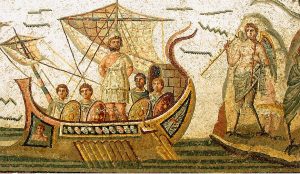
A good example of the intersection of two old, established civilizations is the story of the Karankawa. What follows was researched and written by Hung Nguyen in the Spring of 2020, the semester when we moved from on-campus to online due to COVID-19.
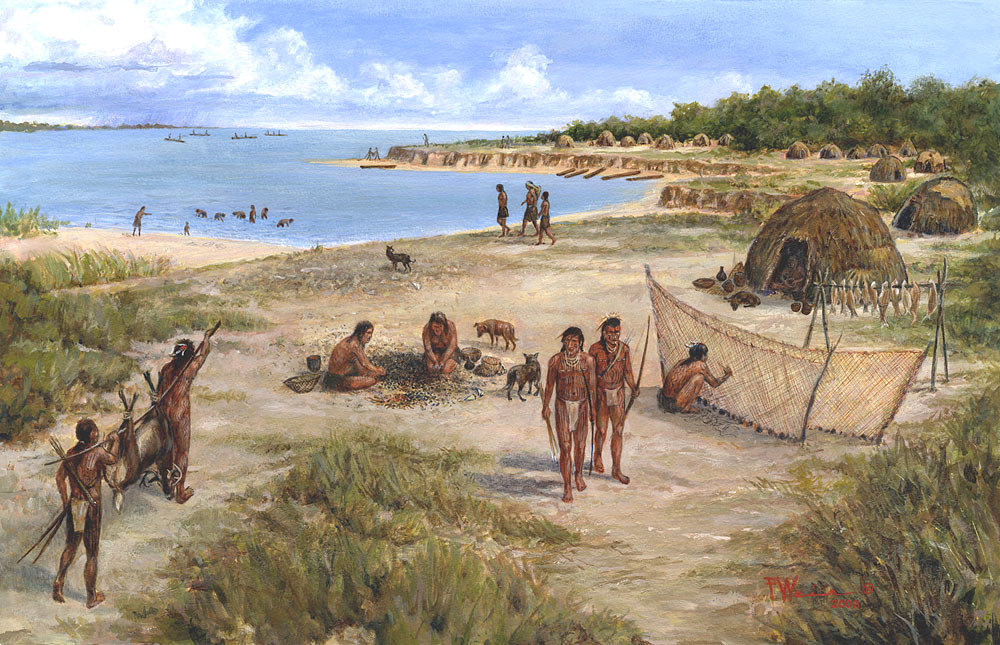
The Karankawa were a Texas Native American group consisting of a few tribes occupying the Texas southern coast from Galveston to Corpus Christi. These tribes include the Capoques (Coaques, Cocos), Kohanis, Kopanes (Copanes), and Karankawa proper (Carancquacas).[1] One major distinction with the Karankawa was their keeping and using of dogs for hunting and other recreational purposes.[2] In fact, it was theorized that the name “Karankawa” came from terms used by surrounding tribes to mean “dog-lovers”, but the origin of the name is still unknown. Because they were nomadic, the Karankawa often moved from place to place, rarely staying in one place for more than a few weeks. The Karankawa were generally known to be peaceful people. When the first European came, the Karankawa treated them well. Only when the European began attacking and invading their land did the Karankawa retaliate. The Karankawa’s interactions and conflicts with the European to defend and maintain their land and ways of life led them to their own extinction.
Despite being viewed by European colonists as ferocious savages, Karankawa were actually very peaceful and skilled people. Karankawa developed their own language to communicate with one another and used gesture language to communicate with other tribes outside their own.[3] In addition, they used smoke to communicate with others over long distances.[4] As hunters, Karankawa were experts at the bow and arrow. Not only did they use them for hunting, but they also used the bow and arrow, along with knives and hatchets, for recreational activities. They practiced the institution of marriage and had some form of a social hierarchy within each tribe, usually headed by a tribal chief and succeeded by his own male successor. The Karankawa had a love for music and were observed to have used at least three different musical instruments, both for entertainment and ritual purposes.[5] When the first Spanish explorer, Cabeza de Vaca, shipwrecked on their shore in 1528, the Karankawa were very friendly and very accomodating toward him, providing him and his crews with food, shelter, and support. De Vaca lived with the Karankawa and eventually joined them. In 1687, Henri Joutel and Robert Cavelier de La Salle met the Karankawa on their expedition and recorded that they were very peaceable. In his report, Joutel wrote that the Karankawa put their hands over their heart upon meeting the group, which meant that they were glad to see them.[6] The Karankawa had shown in early recorded history that they were naturally not hostile people.
With the arrival of Europeans to the new world, the Karankwa found themselves in constant struggle and conflict with these European, which eventually led them to their demise. The friction between Karankawa and European began with the French explorer, Robert Cavelier de La Salle, and his betrayal. After being shown hospitality toward him and his men, de La Salle stole some canoes from the Karankawa, sailed upriver, and eventually established Fort St. Louis. This angered the Karankawa tremendously. As a result, when they found out sometime later that he had died or left the fort, they mounted an attack and massacred all the French settlers, with six surviving children being kept as captives. From that point on, their distrust of Europe only grew. After this incident, there was a continued interest in exploration and colonization of the east coast of Texas by both the French and Spanish. At first, the Karankawa were not hostile toward the Spanish because they were mainly just interested in converting the Karankawa to Christianity. Eventually, the relationship between the two eroded, and the Karankawa began attacking the Spanish as well. The Spanish continued to try to convert the Karankawa but after a century, they deemed it as futile. A Frenchman employed by the Spanish named Athanase de Mezieres suggested they should exterminate the Karankwa, but that plan was never carried out.[7] By the end of Spanish rule of Texas, the population of the Karankawa had been greatly reduced, some through warfare, but most were from epidemic diseases brought over by the Europeans. The first epidemic was observed by Cabeza de Vaca in 1524. De Vaca reported that the Karankawa were hit by a fatal stomach ailment that had reduced their population by half when he was living with them.[8] Karankawa’s number continued to dwindle with an incident that happened in 1819 by a pirate named Jean Lafitte. Lafitte’s men kidnapped a Karankawa woman and the tribes assembled 300 warriors to respond. Unfortunately, they were outgunned by Lafitte and his men and suffered heavy casualties.[9]
As time goes by, new colonists continued to settle in Karankawa territory and they became new threats for the Karankawa. Stephen F. Austin, leader of the colonists, determined that the extermination of the Karankawa was the only solution for stopping the Karankawa attacks.[10] He led a group of men and successfully drove the Karankawa out of their territory. With the help of a Spanish priest from La Bahia Mission, an agreement was made with the colonists that the Karankawa were to remain west of the Lavaca River. However, with constant attacks from other tribes like the Tonkawas and Comanches in the new territory, the Karankawa continued to occupy east of the Lavaca River, causing renewed conflicts with the colonists. By the time Texas gained its independence, the Karankawa number became so low that they were no longer considered a threat. By the 1840s, the remaining Karankawa moved down to Tamaulipas, Mexico to escape from the colonists in Texas. The Mexican authorities began accusing them of plundering and stealing, and thus, Mexican troops were sent to hunt them down. As a result, the Karankawa migrated back up north into Texas. In 1858, a group of Texans, led by Juan Cortina, made a surprising attack and killed all of the remaining Karankawa. After this assault, the Karankawa were considered extinct.
In those 300 years, the Karankawa saw their population diminish significantly through diseases, as well as through constant battles with the Spanish, the French, the British, other Native American tribes, and eventually, the Texan colonists.
Are the Karanawa extinct? Check out this podcast “The Gulf Coast’s Original Settlers Are Far from ‘Extinct.'”
Who was first?
Russians, Basques, Irish, Norse, Polynesian, Arabic, Egyptians, and Romans, to name a few.
Africans had the boat building and navigation skills to make the journey here. Probably the upper Gulf (Texas to Florida) or the Carolinas because hurricanes begin off equatorial Africa and meander through the Lesser and Greater Antilles, the Caribbean, and either into the Gulf of Mexico or up the Eastern seaboard of the US. There are some who collected evidence. The evidence of cross acculturation is questionable in Atlantic Studies, archaeology, and other liberal arts and humanities and is thus questioned by academics.[11]
Some folks claim proto-French people came here first because spear tips found along the west coast of France and the East coast of North America were really, really similar. I heard this on the History Channel (when they broadcast even quasi-history). The problem with this theory is that technology tends to develop simultaneously around the world. Chances are Mayans did not travel to Egypt to learn about pyramid construction or vice versa.
What about the Chinese? Gavin Menzies put out a most interesting but poorly researched claim in a book titled 1421: The Year the Chinese Discovered America. According to his research, a Chinese Muslim named Zheng He led an expedition of about 300 ships to see what was out there. He produced this map, which clearly shows a familiar country’s outline. That theory was debunked. And that map is an internet fake. Been circulated for years. Not everything you see folks is accurate, good, or otherwise useful to forward your thesis.
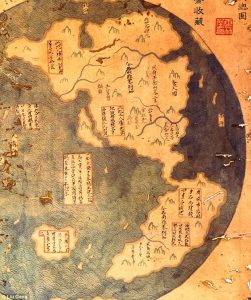
Some people like to say that the United States is a country of immigrants. As you know from the previous chapter people were not indigenous to the Americas, rather people migrated here from Asia tens of thousands of years ago. And until around the year 1000 AD, Amerindians had the place to themselves. Around the year 1000 CE Vikings extended their colonies from Europe (Iceland and Greenland) to present-day Labrador, Canada. The expedition was led by Leif Erickson. The Vikings were Catholics and they lived in caves dug into the side of hills, supported by rocks as well as longhouses. Their colonies flourished for about 500 years. But the Vikings never made it to what became the United States so the question remains unanswered, who was first?
The answer is going to be whoever came here, established permanent settlements, then spread their DNA and their culture. That’s going to be the Spanish (led by a Venician with some Portuguese sailors), then the English, and finally the French.
Motives Behind Exploration: 1490s
Towards the end of the fifteenth century, European nations began exploring down and up the coasts of Africa (Bartolome Dias 1488) and even made it around Africa to India (Vasco de Gama, 1498). One reason why exploration exploded at this time was that technology advanced to the point where ocean-going travel became readily safe. For example, the astrolabe was fine-tuned that it could be used at all latitudes in the fifteenth century. Sail technology made sailing relatively safe and efficient. Another reason behind this push for exploration was due to nationalism. Our country wants to be the first to explore and potentially seize new lands. National pride was at stake. So too was the economic theory of the day: mercantilism. According to mercantilism, there existed in the world a finite amount of valuable resources, and whichever country corners the market on that resource sets the price of that resource. Meaning, you become rich. So national leaders supported exploring as a way of cornering the market on valuable resources such as Asian silks and spices. Now, according to the theory of mercantilism, you were not simply engaged in trade, but rather you would create colonies of people from your mother country and those people would collect the raw resources, ship them back to the mother country, where they would be turned into finished products, finished products that would then be sold in the foreign colonies thus creating new markets. But still, Chinese goods (spices, pottery, silks) were all the rage so any way to control the trade thus cornering the market would be a boon to any country’s economy. By the way, so much of what we think of as “Chinese food” was an invention of late 19th-early-20th century restaurateurs in San Francisco, like Chop Suey.
The Portuguese were the first ones to begin exploring, which meant there was pressure on nearby countries, such as Spain, to begin exploring. This brings us to the story of Cristobol Colon, or Chris Columbus (his name was Anglicized to sound more English. Can’t have a foreigner “discover” ‘Merica. That would be downright unpatriotic.)
Colon was a sailor and a mapmaker from northern Italy. He worked in Lisbon, Portugal with his brother. Now Colon believed that he had discovered a faster way to China -by heading west from Europe. He came to this conclusion because he believed the world was a lot smaller than it was and he disregarded those Vikings’ rumors of land to the west. In 1484 he tried to get the King of Portugal to financially support his westward trip to China, but the king would have no part of it, thus Colon moved to Spain where he talked the twin Catholic leaders Ferdinand and Isabella into supporting his trip ostensibly to get slaves and to bring back Chinese spices and silks. Colon and his fleet departed Spain in the summer of 1492. Two months later he arrived on land, somewhere in the Bahamas. But, he believed to be on an uncharted island off the coast of India, so he named the area the West Indies and the people he called Indians. Colon dies, penniless, in 1506 going to his grave believing that he discovered a faster route to Asia. He brought back some Taino Indians to be used as slaves, but he never found silks, or spices, or gold. After three relatively unsuccessful journeys, the Spanish crown decided to switch from an exploration party to an invasion force.
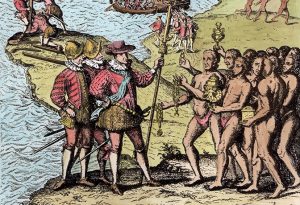
Spanish in the Americas
Spain seized numerous islands in the Caribbean, then turned inland. Hernan Cortez, with only 400 men, toppled the massive Aztec empire for two reasons. First, the other Indian tribes joined forces with the Spanish, and then due to diseases. When the Spanish landed in the Americas, they initiated a series of exchanges. Exchanges of animals, plants, and microbes are called the Colombian Exchange. From Europe, the Spanish introduced large animals such as pigs, cattle, and horses. Animals that ate the local crops. The Spanish introduced sugar, tea, and coffee. In fact, sugar plantations were the primary reason for establishing colonies after Colon’s failed voyages. Sugar would be turned into rum. The Spanish introduced Africans as slaves into the Americas. And finally, the Spanish introduced diseases such as smallpox, measles, tuberculosis, cholera, bubonic plague, influenza, yellow fever, dysentery, typhus, diphtheria, and scarlet fever, to name but a few. As the Indians had no resistance to these foreign diseases, Indian populations were decimated.
On Hispaniola, the population went from several million to a few hundred in fifty years. Throughout Mesoamerica, the Indian population went from 25 million to one million in just one hundred years. From the West, the Spanish brought to Europe tobacco (originally sold as an antidote to diseases), potatoes, chocolate, corn, and tomatoes. This means before 1492 the only type of sauce you got on your pasta was alfredo. The Spanish also brought Indians as slaves back to Europe. And when it came to diseases, the main one the Spanish brought to Europe was syphilis. Now, syphilis is a venereal disease. The only way to get syphilis is through unprotected sex. Syphilis, like tobacco, spread across Europe like wildfire. The rise in syphilis in Europe resulted in sexual puritanism and marriage at earlier ages. Spanish settlements in the Western Hemisphere were based on the encomienda system.
The encomienda system created a parcel of land (a ranch) for each Spanish settler. Settlers were to build homes, a school, and a church. Settlers were allowed to use Indian labor and in exchange would “civilize” Indians -teach them to read and write Spanish, convert them to Catholicism, and get the Indians to adopt Spanish names. Spanish male settlers even married Indian women, producing a new group of people called Mexicans. In a sense, the Spanish included the Indians in their society. As you will see in the pages that follow, the English excluded Indians from society. That is, the Spanish brought the survivors into their society. Initially, the Spanish used Indians as slaves. The Spanish also brutalized the Indians, including throwing Indian babies into a pack of wild dogs and betting which dog would kill the baby or cutting the hands off of Indians and watching them bleed to death. The cruelty was too much for one Spanish administrator turned priest, Bartolome de las Casas. De las Casas wrote a long missive to Spain on what he witnessed. Priests need to convert these Indians, de las Casas wrote, but the soldiers’ cruelty was making the priests’ job harder. Instead of using Indians as slaves, de las Casas proposed, why not use Africans? The result was the massive influx of Africans as slaves into Spanish America. By 1600, the Spanish empire in the Western hemisphere stretched from California to Florida, and down through Mexico and Central America, all the way to the tip of Argentina.
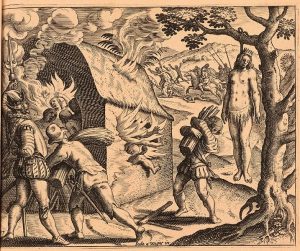
Northern Encounters
France turned its attention to the northern regions of North America and began sending explorers into modern-day Canada and the upper Midwest (like Wisconsin and Michigan) in the 1520s, establishing trading posts and developing working relationships with many Indian tribes. The Dutch were next to establish colonies in North America. They settled New Amsterdam in what is today New York City. The Dutch empire, called New Netherlands, stretched from Fort Orange (today called Albany) into modern-day New Jersey. In other words, the Spanish had the southern part of the American east coast, the French controlled the northern part, and the Dutch controlled the mid-Atlantic region. There was not much land remaining for the English to establish colonies. Well, the first English expedition was led by the Genovese captain John Cabot, who reached Labrador Canada in 1497.
Inspired by this, the French king authorized Jacques Cartier, in 1534, to try to find the “Northwest Passage.” The Northwest Passage was the fabled sea-going link between the Atlantic and Pacific Oceans -something that Colon believed he had discovered. While Cartier failed to find the Northwest Passage, he did explore the St. Lawrence River and the Great Lakes region. Cartier’s expeditions from 1535 to 1541 established France’s claim on Canada and the upper Midwest. The French explorers were focused on obtaining beaver pelts. The European beaver was nearly extinct and so the price of beaver pelts was tremendously high, beyond the reach of your average Englishman. However, like the Spanish, the French introduced massive waves of epidemics that killed an untold number of Native Americans and endemic warfare transpired among Indians over access to beaver hunting grounds. What really pushed England into exploration was the Protestant Revolution. A German cleric, Martin Luther, initiated a wave of unrest throughout Europe against the Catholic Church in Rome.
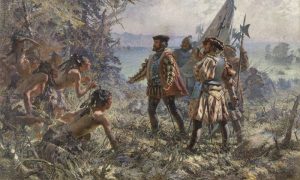
The English king, Henry VIII, used this unrest to completely break away from Rome and thus created a new church, the Church of England, and placed himself as the secular and religious ruler of England. Now religion played a major part in England’s interest abroad. Spain remained true to the Catholic Church, so too did France and so it looked to the Anglican English that all of North America would be controlled by Catholic countries. Again, it was not English, but rather French people who first attempted to establish a colony in present-day America. In 1560, a group of French Protestants, the Huguenots, established a colony on Parris Island, off the coast of what became South Carolina. The colonists nearly starved and were forced into cannibalism. The survivors were rescued by a passing English ship.
French Protestants established a new colony along the St. Johns River in Florida. Spain was alarmed by Protestant attempts to create colonies in the Americas, so Spain began building colonies in Florida. The first Spanish colony was named St. Augustine, then their leader, Don Pedro Menendez, led a military attack against the Protestants, killing 500 in the process.
English Encounters
English movement across the Atlantic was tied to developments at home. Rents were fixed by custom, yet landowners sought new ways to raise their incomes so many converted their fields to grazing pastures for sheep (you could make more money in the wool business than in growing wheat). Much of the agricultural land in England became off-limits to the peasant-farmers, thus they migrated from the countryside to the cities seeking employment. Cities burst at the seams. So after England left the Catholic church, in 1534 King Henry VIII sent many of the peasant-farmers to live in Ireland as a way of trying to dilute the Catholic majority on that island. Actually, it was not as much a population movement as it was an outright military attack against the Irish, led by Walter Raleigh. In 1562, England began operating in the slave trade when John Hawkins transported a boat of African slaves into the Caribbean.
John Hawkins was not an agent for the English king, rather they were private pirates called privateers. In fact, English privateers also laid siege against Spanish colonies. “He that commands the sea, commands the trade,” said Walter Raleigh who by 1567 had become a “Sea Dog” (English privateer). Henry VIII died and was replaced by one of his daughters, Elizabeth I. Elizabeth began to openly support the Sea Dogs, such as Raleigh. One of Elizabeth’s advisers, Richard Hakluyt, wrote a paper stating now was the time to begin colonization of the Americas, which included moving England’s entire population of what he called “loiterers and idle vagabonds” to America. Martin Frobisher led several expeditions near Newfoundland (Canada) but all that resulted was the expedition of British fishing for cod in the North Atlantic.
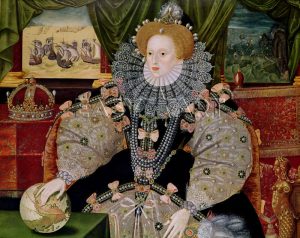
It was Walter Raleigh who first decided to create a colony in the southern Atlantic region of the Americas. He called his new colony Roanoke and it lasted from 1584 to 1587. The colony was located on an island off the coast of present-day North Carolina. Roanoke was a failure and the people just disappeared scrawling mystic messages like the word “Croatoan” on a tree. We don’t know what they met. Croatoan was the name of an Indian tribe in the area. Did the message mean that the colonists moved to the Croatoan village? Were they taken as prisoners? We do not know. But, England’s first colony, Roanoke, ended in utter failure. Meanwhile, in 1588, the Spanish king, Phillip II, sent what he called his Invincible Armada to invade England and force England to return to the Catholic fold. Two problems occurred for the Spanish: first, the English boats were smaller and thus more highly maneuverable, and second, a massive storm whipped through the English Channel. Half of the Armada was sunk, and the survivors were captured and killed. The defeat of the Spanish Armada meant that there was no navy left to get in England’s way.
In 2006, Phillip Evans wrote, on 18 Aug. 1590 John White “had seen the three Roman letters ‘CRO’ carved into a tree on the bluff of the sound shore. In neither place did he discover a cross, the secretly agreed upon a sign that the colony, now known as the Lost Colony, was in distress.” White believed that this lack of a cross was a sign that the colony moved to Croatoan, the population center of the Croatoan people.[12] One of the people who disappeared was Virginia Dare. Dare was the first English person believed to have been born in British colonial North America. White nationalism was on the rise as a result of events post-2016 presidential election that I cover later in this guide. This article looks at Virginia Dare in a new way -as a symbol of white nationalism.
Columbian Exchange
The Columbian Exchange, something I touched upon piecemeal above, was the purposeful and accidental exchange of plants, animals, and microbes among European explorers/settlers and First Peoples. Europeans brought in large animals (horses, cattle, and sheep).
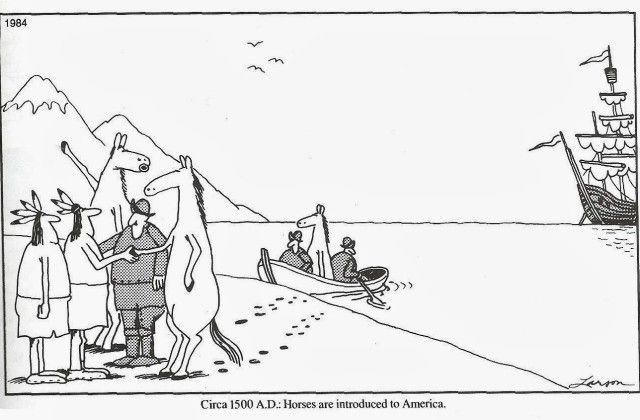
They also introduced plants such as sugar but most were accidentally introduced such as weeds and other noxious plants. Without naturally occurring bugs to consume the plants or disease to wipe out the plants, foreign plants quickly overtook indigenous plants, affecting the ecology of North America. Finally, the most devastating introduction were diseases such as smallpox, tuberculosis, measles, mumps, and scarlet fever, to name a few. Without antibodies, the First Peoples died off. 100% mortality rate in the Caribbean. About 66% mortality rate in Mexico and about 33% north of the Rio Grande. Europeans introduced tobacco and chocolate to Europe as well as tomatoes, pumpkins, and potatoes. Chocolate shops were all the rage throughout Europe. And a disease that the First Peoples introduced to the Europeans was venereal syphilis. Transferred from person to person through unprotected sex, syphilis spread quickly throughout Europe. And they blamed each other. The Spanish called it the French disease. The French called it the Portuguese disease, et cetera all the way to nearly China, in about 100 years.

In a very short period of time, there transpired massive changes to the ecology, demographics, and culture of what became the United States. The changes continue today, but more so in the areas of politics, economics, and climate -things that will be covered in the second part of this guide.
Columbus did not discover anything. Rather, he introduced two very old peoples with two very old cultures. Within a very short period of time, the European model will dominate North America leading the English to believe that the British way is God’s way and that if you interfere with England’s plans for settlement, expansion, and conquest, you are getting in the way of God’s plans. And those who interfere with God will be dealt with most severely. God, the English believed, was on their side.
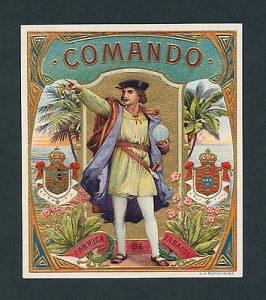
And then in 2020, there was a wave of anti-slavery/anti-treason/anti-traitor sentiment that resulted in many demanding the dismantling of Confederate soldiers’ statues and Confederate sympathies’ monuments. Then, the movement became anti-colonial/anti-racist and so protesters began looking at statues dedicated to people like Christopher Columbus, whose “discovery” resulted in the deaths of millions of people. Statues came down in such places as Columbus State Community College and an Italian neighborhood in Chicago and politicians weighed in. Of course, sometimes protesters just tore the statues down themselves, as what happened in St. Paul, Minnesota on June 10th, 2020.

I would like to thank Hung Nguyen for his time, insights, and interest for which this has become a more interesting chapter.
As with the other chapters, I have no doubt that this chapter contains inaccuracies. Please point them out to me so that I may make this chapter better. I am looking for contributors so if you are interested in adding anything at all, please contact me at james.rossnazzal@hccs.edu.
- Carol A. Lipscomb, “Karankawa Indians”, accessed February 05, 2020. https://tshaonline.org/handbook/online/articles/bmk05. ↵
- Vivien Genesser, “Native transgressions: a look at the portrayal of Kanrankawa natives in Texas history textbooks and trade books”, accessed February 05, 2020. https://go.gale.com/ps/i.do?p=AONE&u=usocal_main&id=GALE|A284325075&v=2.1&it=r&sid=AONE&asid=e3eb7e54. ↵
- Samuel Gatschet, Charles Hammond, Alice Oliver, The Karankawa Indians: The Coast People of Texas. (Peabody Museum of American Archaeology and Ethnology, 1891), 34. ↵
- Ibid, 19. ↵
- Ibid, 18. ↵
- Vivien Genesser, “Native transgressions: a look at the portrayal of Karankawa natives in Texas history textbooks and trade books”, accessed February 05, 2020. https://go.gale.com/ps/i.do?p=AONE&u=usocal_main&id=GALE|A284325075&v=2.1&it=r&sid=AONE&asid=e3eb7e54. ↵
- Carol A. Lipscomb, “Karankawa Indians”, accessed February 05, 2020. https://tshaonline.org/handbook/online/articles/bmk05. ↵
- Bruce Trigger, Wilcomb Washburn, “Entertaining Strangers: North America in the Sixteenth Century”, The Cambridge History of the Native Peoples of the Americas, 346. ↵
- David Gracy II, “Jean Lafitte and the Karankawa Indians”, East Texas Historical Journal, 41-42. ↵
- Ibid ↵
- https://www.dispatch.com/content/stories/science/2014/11/02/01-evidence-scant-for-ancient-muslims-in-america.html ↵
- https://www.ncpedia.org/croatoan ↵

